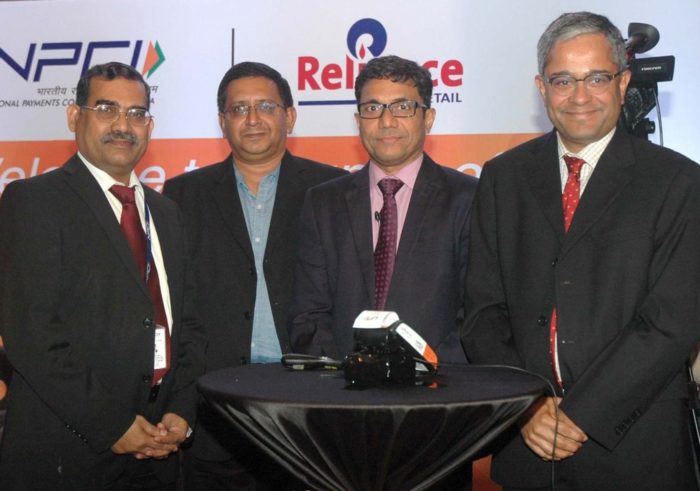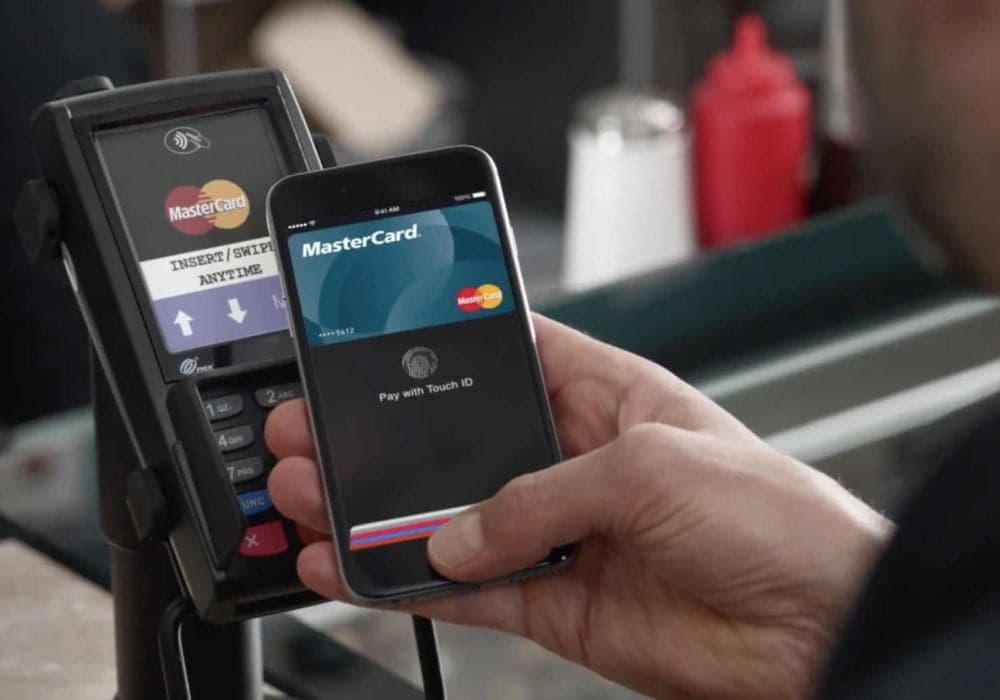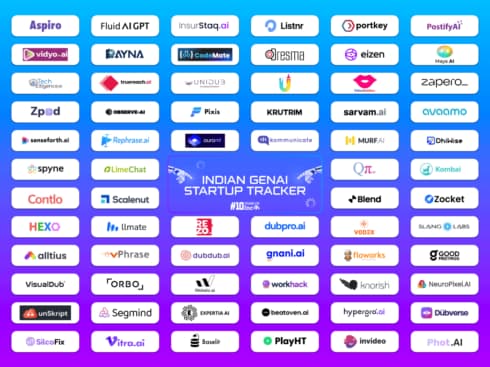The Roller Coaster Ride Of Innoviti From Wireless Hardware To Digital Payments And SME Lending: A Chat With Founder Rajeev Agrawal
In a world inundated with overnight successes and viral hits, the story of Innoviti founder Rajeev Agrawal is refreshingly real. His long-meandering career as an entrepreneur has encompassed several milestones over the course of 15 years. From its inception as a wireless hardware systems manufacturer in 2002, Innoviti has steered its course into digital payments and SME lending, with its flagship product UniPAY which as per the company, is currently processing more than $3 Bn worth of transactions in over 700 cities each year.
A Ph.D. graduate from IIT Bombay, Agrawal exudes the quiet confidence of a man who knows what he is doing. Speaking about UniPAY’s core technology, Rajeev uses an interesting analogy involving Google Maps. He explains, “We have adopted a similar approach as Google maps, which looks ahead and tells you which road has less traffic. It also points out the alternative roads that can be taken. This is exactly what we do with a transaction.”
When a transaction leaves a machine, the UniPAY technology tries to look ahead to check the reliability and speed of the route along which the transaction is supposed to happen. It also attempts to find out if there’s any better route available. At any given time, the algorithm keeps on analytically switching the process to make sure that it will happen the fastest and in the most reliable manner.
Over the last 12 months, Innoviti has branched out into SME lending as well. Although seemingly disjointed, the move, Innoviti CEO Rajeev Agrawal assures, was the natural outcome of the company’s sustained efforts to look at problems across the digital payments supply chain, and not just at the consumer level. While UniPAY aims to facilitate the movement of money and the transfer of information, the SME lending service is intended for supplying working capital to the growing population of small merchants in the country.
To a great extent, Innoviti’s success can be attributed to the founder’s love for numbers. In our hour-long conversation, Rajeev Agrawal shared several numbers that are indicative of Innoviti’s inspirational voyage from 2002 to the present. So, let’s take a peek at some of these numbers:
From Wireless Hardware To Digital Payments: How It All Began
Despite changing its course several times in the last decade, Rajeev maintains that Innoviti was started with the perspective of building a robust product business in India. The idea was to create a non-linear revenue model that is dependent not on the number of customers, but on the value of the product. The venture-backed fintech firmm made its debut with short-range wireless hardware that allowed users to set up portable wireless networks (WiFi) in homes, hotels, restaurants, and petrol pumps for payments.
According to Rajeev Agrawal, Innoviti’s foray into digital payments was the result of a happy accident. In 2007-08, there was a need for a wireless payments terminal technology that could be brought to the customers, instead of the customer having to go to the terminal. Developed specifically for the consumer market, the hardware product was envisioned as a solution for making payment terminals wireless. This eventually paved the way for UniPAY, as we know it today.
Rajeev recalls, “At that time, there was also a security concern surrounding the usage of card swipe machines, especially in restaurants and hotels. Web PIN wasn’t in use then. The product we developed allowed business owners to securely bring the terminal to customers.”
It was around the same time that India’s fledgling digital payments sector received its first major boost with the arrival of large retail chains like Reliance Retail, Future Group, and others. The birth of Innoviti’s UniPAY product line can be traced back to 2008, when the company partnered with Reliance Retail to build a dynamic payments platform that would allow users to not only transfer money, but also transmit the information associated with the transaction, in terms of who’s paying, the amount, and the invoice number.
UniPAY = Google Maps Of Digital Payments

The payments platform was originally meant for offline organised retail, especially larger retailers like Reliance Retail, Inox, Tanishq, etc. With further development of the core technology, UniPAY was soon able to process a particular transaction with a bank that would charge the least amount of fee.
Using this technology, retailers were able to directly integrate the transaction information into their ERP system, thereby reducing the kind of manual effort and error that would happen otherwise. Since its launch, the platform has evolved considerably to include a number of value-added features. Today, UniPAY processes close to one-fifth of all digital payments made at large retail stores in the country, amounting to a staggering $3 Bn transactions annually, claims Rajeev.
Operating in about 700 cities across India, the UniPAY platform has undergone a near 100% growth between March 2016 and March 2017. Immediately after demonetisation, the company saw an almost 100% increase in the transaction volume as well as the number of users. In the last nine, there has been a sustained increase of around 30%.
Despite the encouraging numbers, Rajeev Agrawal maintains that the real advantage of demonetisation was in the qualitative aspect of being instrumental in opening up several previously closed off segments to digital payments, including medicine, education among others.
Wielding Technology To Attain Speed, Reliability, and Flexibility
For Rajeev, speed, reliability, and flexibility are the three key tenets of any good product business. He says, “We realised, having been in the space for more than seven years, that one of the main challenges that the digital space is facing at the ground level is that both the consumer and the merchant are not very comfortable with digital transactions because of the unreliability of it.”
Fundamentally, people find cash much more comfortable and this is due to a number of problems with digital transactions. For instance, at times, the digital transaction goes through, but the message does not come; or the cashier swipes the card twice. At other times, the transaction is completed successfully, but the bank debits the amount twice. As stated by the face of Innoviti Rajeev Agrawal, the proliferation of digital payments solutions has been very limited beyond tier-I cities, even after demonetisation.
This elemental issue of reliability is what Innoviti sought to solve with the Series A funding it raised from founder and former chairman of Infosys, NR Narayana Murthy’s Catamaran Ventures in 2015. The objective was to re-architect the UniPAY platform to create something that is fast, flexible, and ultimately, reliable. With UniPAY NEXT, the company has managed to develop a solution that assures merchants and consumers that a transaction will happen within seconds of the card being swiped.
Coming back to the Google Maps analogy, Rajeev Agrawal adds, “When a transaction leaves a machine and has to go right up to the bank of the cardholder and come back, along the way it travels through multiple routes.”
So, How Does Innoviti Ensure Speedier Transactions?
According to Agrawal, the first point of attack is communication. At any specific point, depending upon the network’s location and load, the reliability and speed of different routes of communication are different. With the help of advanced sensory algorithm, the company’s UniPAY platform relays this information to the user at real-time.
The team at Innoviti explains, “In many ways, the advanced algorithm also looks at the previous transaction that has gone down different routes. We essentially do the same as Google Navigation, only in the digital payments space. Google looks at the cars that have gone down the road before you. Through GPRS, Google tracks the number of cars as well as the likelihood of the road being congested.”
With the look-ahead sensing algorithm, UniPAY NEXT has managed to cut down the transaction speed from the average of seven to around two seconds. “When we talk about reliability, it simply means for every transaction that has been initiated, how many succeeded and how many failed. The reliability of payment getaways is a public data. The reliability in the country today runs around 80-82%,” adds Rajeev Agrawal.
The UniPAY system, on the other hand, has been able to achieve reliabilities of 96%. Over time, higher reliability helps build trust and confidence among cashiers and merchants.
SME Lending Service: Providing Credit To India’s 48 Mn Small Merchants
“Our whole aim in the digital payments space was that we should move money, but we should transfer the information of the transaction as well. A common problem we have seen in the payments space is that a customer often does not have adequate money to pay for the transaction, and therefore they require a loan,” answers Rajeev when asked about the rationale behind Innoviti’s foray into the still-nascent domain of SME lending.
The genesis of the SME lending service, came about when merchants on the UniPAY platform approached Innoviti about a new product idea. The problem of insufficient funds that retail consumers routinely face is exactly the kind of problem that retailers have to deal with when buying from large suppliers. Rajeev continues, “For a retailer, there are two solutions – taking a loan from a banking institution or requesting the supplier to extend the credit to him. However, the basic problems of moving money, transferring information and supplying money in a shortfall remain the same, whether you look at the consumer-to-merchant interface or the merchant-to-supplier interface.”
In fact, these problems remain the same across the supply chain. At the small merchant level, the problem of insufficient supply of credit is an especially crippling one. Given that India is home to more than 48 Mn SMEs, tackling the issue at large scale, although challenging, is actually essential to the country’s economic growth.
Operating within the UniPAY platform, the SME lending service uses the merchant’s credit history to determine his/her creditworthiness. Based on the information, the company creates a credit line which can be then used by a small merchant to buy inventory from a supplier. A stickler for accuracy, Innoviti founder and CEO Rajeev Agrawal is quick to point out that Innoviti serves only as the intermediary platform. He adds, “We do not give the credit from our books. We are only the platform. The loan is provided by mainstream banks.”
160K Loans, $78 Mn Disbursement: Innoviti Striving For Financial Inclusion

Since its launch in 2016, the SME lending product has disbursed between about 160K loans to over 30,000 small merchants in different parts of India. The yearly disbursement volume of SME lending ranges from $62.3 Mn (INR 400 Cr) – $78 Mn (INR 500 Cr). The average ticket size of loans is around $312 (INR 20,000), with the payback duration being not more than 15 days. Given its small value and short duration, the loan is only meant to allow merchants to buy trade goods from suppliers and sell them to customers.
At the moment, Innoviti is working with three partners for its SME lending service which include Kotak Mahindra and NBFC. When asked if Innoviti is looking to onboard individual investors, Rajeev had this to say, “We are not looking at individual/private lenders because by and large, the cost of capital for a bank is very low. Because banks have access to current and savings accounts, the cost of capital is usually very low.”
While for distribution, it currently works with banks and payment companies to acquire new customers in tier-II and tier-III cities. Through its digital payments platform, Innoviti also offers consumer loans in the form of credit card EMIs, in addition to providing SME lending. To bolster the service further, the company will soon start accepting Bajaj EMI on the same platform.
Underwriting Relationships, Not Just The Recipients Of Loans
In the SME lending segment, a common problem is the lack of verifiable data about the merchant’s credit history, which invariably increases the risk of default. In a country with 1.3 Bn population, there are only around 220 Mn PAN cards. Despite the government’s continued efforts to promote financial inclusion, 19% of India’s population is still unbanked, according to an Assocham India-EY joint study.
More often than not, intermediaries like Innoviti have to rely on the records of credit bureaus to ascertain the small merchant’s creditworthiness. The sad fact remains that a major section of India’s small merchant community, especially in rural and semi-urban areas, have no place whatsoever in these credit bureaus.
Unlike most competitors, however, Innoviti has come up with an innovative, and equally effective solution to the problem of defaults. Instead of underwriting the small merchant, the loan is issued against the merchant-supplier relation. For this, the core technology behind the SME lending product tracks information directly from the supplier and evaluates the relationship index between that particular merchant and supplier. And with this, it creates a credit profile, which can then be used to create a credit line. “This means that the unsecured loan will b used to the merchant only to pay to the said supplier,” adds Rajeev Agrawal.
As an additional step of security, Innoviti disburses the credit directly to the supplier, thus eliminating even the tiniest chance that the merchant might default. Its current rate of default, in case you’re wondering, is less than 0.7%. Rajeev argues, “Two of the main reasons behind loan defaults are borrower intent and difficulty in loan repayment. We have been able to knock out the intent issue because we are giving the credit strictly against a relationship. Because the borrower doesn’t get cash in his hands, there is no question of misusing it. We minimise the second risk through proper profiling of borrowers. Business stability is an important criterion when it comes to risk management against loan defaults. We need a certain consistency in the merchant’s relationship with suppliers.”
Rajeev Agrawal On Navigating Through Challenges In The Digital Payments Space
Although opportunities for growth in the digital payments segment are boundless, the sector has its fair share of challenges as well. Talking about the main hurdles Innoviti has had to overcome, Rajeev Agrawal highlights the fact that the whole financial technology space is a highly regulated one. With conservative partners, like banks, as the main player, acceptance of innovation in this ace is challenging, because you have to convince a lot of people that the technology in question will add value.
The second pain point pertains to the lack of product expertise that continues to main the country’s industrial growth. In India, product development has been largely limited to IT. Innovators and problem-solvers are more focussed on implementing existing technologies, rather than building them from ground-up. This shortage of technical talent is acutely felt in the payments space, where new technologies usually have low penetration.
In an age where more than 2.5 quintillion bytes of data are consumed daily in the form of emails, videos, images, tweets, and content, the risk of cybersecurity breaches cannot be entirely eliminated. As part of a recent study, the Centre for Software and IT Management (CSITM) at Indian Institute of Management Bangalore surveyed the risks associated with digital payments in the country.
The study uncovered a barrage of serious privacy concerns with all the services mentioned above. For instance, while in many apps like Freecharge, the e-wallets are not directly connected to third-party vendors like Bigbasket and Uber, Paytm allow for automatic linkage with the vendors, which increases the risks even further. To combat security concerns, Rajeev and his team at Innoviti have developed technologies that are compliant with PCI standards.
According to Rajeev Agrawal, Innoviti differs from competition in two ways. Firstly, the company focusses on the three core tenets of transaction: speed, reliability, and flexibility. Cost is not one of them. The second aspect is that Innoviti is looking at payment solutions across the supply chain, and not just at the retail level. The deeper the engagement with customers, the easier it is for the company to survive competition, Agrawal believes.
A Glimpse Of The Future & Hitting Profitability In 12 Months
Despite cut-throat competition in the digital payments space, Bengaluru headquartered Innoviti seems to be right on track. Fifteen years after it took its first step, the company has blossomed into a formidable enterprise with of a workforce of more than 150 people across offices in Mumbai, Chennai, Delhi, and Hyderabad. Additionally, it has agents in 22 cities around the country.
One word that you will rarely come across in the startup world, with its swanky office buildings and multimillion-dollar salaries, is “frugality”. That is also the word that Rajeev Agrawal uses to describe the way Innoviti has been run since its inception. He states, “We have been very old school in the way we function. In 2007-08, because the payments space was not very developed, we grew the business very gently. As a result, we have stayed cash positive and profitable most of our career.”
That changed in 2015-16 when the company’s SME lending product made its debut. The issue with short-term, small loans, according to Agrawal, is that it can work only with a very deep integration of technology with the lender. Any kind of manual process will, therefore, erode the profitability of the process. To be able to build such advanced technologies, however, requires investments. This is when Innoviti raised a Series A in June of 2015. Recently, in July 2017, the company secured another $18 Mn (INR 120 Cr) in a Series B funding round led by Singapore-based SBI-FMO Fund. The round was joined in by Bessemer Venture Partners and existing investor Catamaran Ventures.
Post the July 2017 fundraise, Innoviti’s focus has shifted to rapidly expanding the UniPAY NEXT product line in terms of market penetration and expansion. The company further looks at growing the SME lending product into a full supply chain-based product. And once the platform expansion happens, the third natural development would be the market expansion of the SME lending product line.

For Rajeev Agrawal, the mantra is to never stop innovating. The company is working tirelessly to build technologies that facilitate speed, reliability, and flexibility. One of its chief goals is to bolster growth through the integration of multiple payment channels like Bharat QR and e-wallets into the now-outdated POS system. In March 2017, for instance, Innoviti partnered with NPCI to develop the country’s first in-store UPI-based payments facility designed for use in Reliance Retail. Additionally, the company is also looking to capitalise on UPI’s instant money transfer technology and is currently in the process of introducing UPI at B2B level.
Although the launch of its SME lending service in 2016 did set the company back a few months, founder and CEO Rajeev Agrawal is confident that Innoviti will hit profitability within the next 12 to 18 months. While $23 Mn funding is nothing to write home about, especially for a company that has been operational for the last 15 years, Rajeev firmly believes that a little goes a long way when it comes to investor money. According to him, “The whole payments and lending business is a highly profitable one, so you don’t need to look for funding to run the business.”
Editor’s Note
As a man with foresight, Rajeev is well aware of the immense potential the Indian digital payments industry has, which is something that will continue growing as access to Internet and smartphones increases. As per a recent report by Google and Boston Consulting Group, digital payments is projected to reach $500 Bn by 2020, contributing 15% to India’s GDP. Further, by 2020, non-cash contribution in the consumer payments segment is expected to double to 40%.
In the country’s retail segment, in particular, digital payments has ushered in a storm of revolution. At present, around 10% of the total retail spending is done digitally through POS machines, e-wallets and other solutions. According to Rajeev, digital transactions in the retail segment stand a chance of reaching 30% in the coming five to seven years, provided the current growth rate is maintained. With the government doubling down on its promotion of digital payments solutions, including UPI, BHIM, and Bharat QR, many online players like Google, Amazon, WhatsApp, Paytm, and Hike have also entered the space.
The arrival of big names like Google and Amazon has made competition in this sector undeniably strong, which could prove detrimental especially for smaller companies. Saturation is another key concern in the digital payments space, where the adoption of digital technologies is largely limited to tier-I and tier-II cities. Thus, to be able to realise the goal of financial inclusion, it should be supported by a robust infrastructure that makes the transition to digital solutions easier and more effortless.
For Innoviti founder Rajeev Agrawal, however, the answer lies in bringing change and innovation at the grassroots level. He concludes saying, “A rapidly growing Indian economy with fledgling infrastructure needs a different approach to the delivery of payment solutions. An approach that first focuses on making every transaction happen, and happens fast. Innoviti, with its extensive experience and relationships in the payments space, has embarked on the journey of delivering this simple promise of speed and reliability in payments.”
































 Ad-lite browsing experience
Ad-lite browsing experience